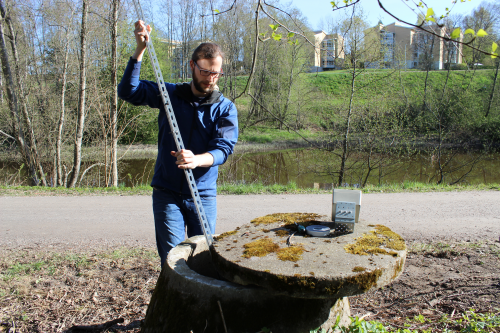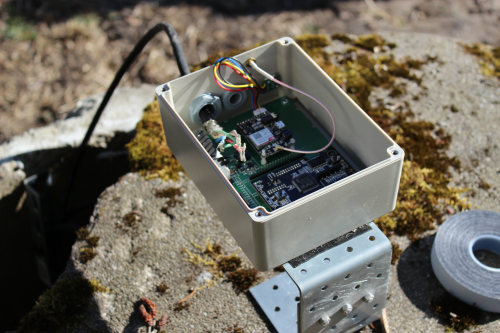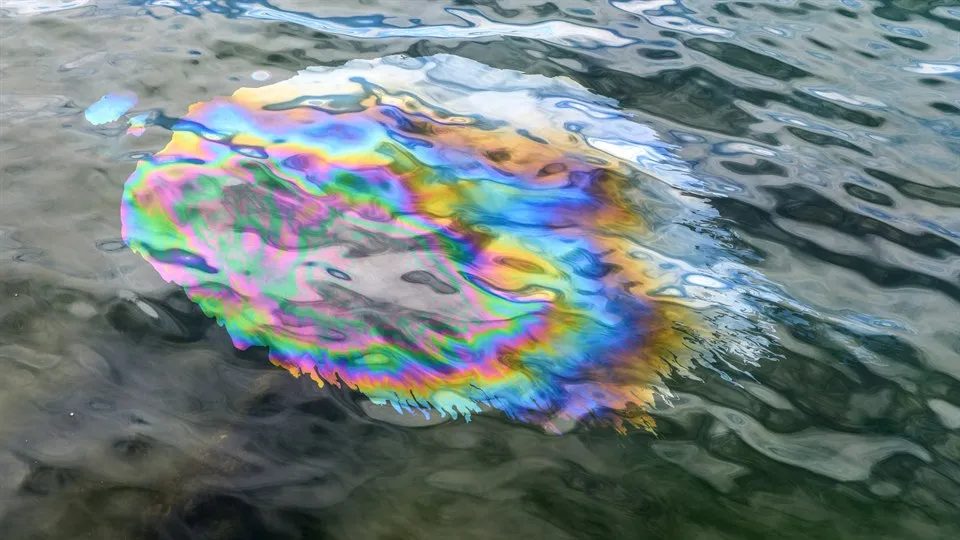Digital sensors in the hunt for oil spillages
Oil spillages can cause serious harm to lakes and other bodies of water and there are unfortunately often no tools to detect a spillage at an early stage. By means of on-line sensors placed in drains and water pipes it is now possible to identify oil spillages more effectively than was previously the case.
Over the past 40 years, much has been done to prevent oil spillages into our lakes and rivers. A long-term effort to improve the purification process already at the point of discharge has reduced oil spillages. But spillages both large and small nonetheless continue to occur. Spillages are caused by both private individuals and companies through, for example, accidents or when oil containers leak.
“Today’s solutions for detecting oil pollution are troublesome and time-consuming. We’ve been working for a long time to find ways to trace spillages in our pipes but it was not until we came in contact with Mid Sweden University that we saw the possibility to use sensors to warn of oil at an early stage,” says Anna Stenlund at MittSverige Vatten.
The technology to identify oil spillages in sewage systems was previously expensive and resource-intensive because the sensors that were available had a battery life of only a few weeks. The high cost of the technology was a barrier to being able to install the number of sensors needed in a delimited sewage system. Oil spillages therefore often went undetected until they reached a treatment plant. After floods, oil spillages may instead not be detected until they reach a body of water, which can have devastating consequences for plants and animals in the vicinity.

Sebastian Bader, researcher at STC, is testing the new sensor.
During 2016 a collaboration began within the SMART research project between Mid Sweden University’s research centre STC, MittSverige Vatten och Avfall, Dewire and Miljökontoret. The project members have together produced an initial prototype for detecting oil in water using cheap sensors that can wirelessly transmit an alarm to a web page or an app.
“The challenge in the research is to devise a sensor solution that can handle operating in the tough environment that a drain is and it also has to be powered without extra effort like for example replacing batteries,” says Mattias O´Nils, one of the researchers in the project.
Even if the project’s primary focus is on the problems related to oil spillage, the wireless technology can also be used to identify other discharges. Mattias’ vision is to be able develop different areas of application for the technology.
“Our intention is to create possibilities to monitor all kinds of emissions and environmental parameters at a low cost to enable the environment to be digitised and connect these parameters in the control loop for industry and towns and cities.
The first series of sensors was completed in April 2017. MittSverige Vatten och Avfall were pioneers in testing the technology and the first sensors were installed In Sundsvall’s storm water grid. The major challenge throughout the project has been to develop a sensor that requires little maintenance and that is cheap at the same time. MittSverige Vatten och Avfall’s sensors were able to be connected to Sundsvall’s LoRa (Low Range) grid, which meant that battery usage was minimised. This prolonged the life of the sensors’ batteries from a few weeks to several years.

The transmittor.
Oil spillages in water constitute a threat to ecological systems at both national and international level. The wireless sensors developed in Sundsvall can thus save resources and protect the environment in many places around the world.
